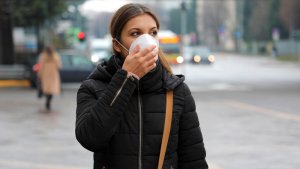
Addiction in Canada: Canada Drug & Alcohol Use Statistics
For many years, Canada’s drug use statistics remained relatively stable, but since the COVID-19 pandemic, rates of drug and alcohol use in Canada are increasing.1 As a result, there is an increased need for access to addiction treatment in Canada.
This page will go over statistics on the prevalence of drug and alcohol use and addiction in Canada and how addiction treatment can help Canadians find recovery.
Canada Alcohol Use Statistics

Alcohol is a widely distributed and legal drug in Canada and, as such, it is the most commonly used drug in Canada.2 According to the 2019 Canadian Alcohol and Drugs Survey (CADS) 76% of Canadians drank alcohol in the past year,3 a percentage that stayed steady since the survey began in 2013.2
However, alcohol use has increased since the pandemic,1 which may have serious implications for health-related issues and the need for addiction treatment in Canada. The extent of this problem is not yet fully understood; according to recent studies, the increase in alcohol use in Canada rose between 19% and 28% during the pandemic.1
Canada’s low-risk drinking guidelines outline the number of drinks a person should not exceed to remain safe and healthy:4
- The first guideline states that women should consume no more than 10 drinks a week and no more than 2 drinks a day most days. Men should consume no more than 15 drinks a week and 3 drinks a day most days.
- The second guideline states that women should consume no more than 3 drinks and men should consume no more than 4 drinks on any single occasion.
The following alcohol statistics help to shed light on the extent of the problem in Canada:3
- In 2019, of the people 15 years of age and older who consumed alcohol, 23% exceeded the first guideline, which indicates chronic unhealthy drinking. Youth aged 20–24 had riskier drinking patterns than other age ranges, with 31% exceeding the first guideline. Of youth between 15–19 years of age, 23% exceeded that first guideline.
- In 2019, of the people 15 years of age and older who consumed alcohol, 17% exceeded the second guideline, which indicates acute unhealthy drinking. As was the case with the first guideline, young people are at a higher risk than the general population. Of youth aged 20–24, 26% exceeded this guideline. Of youth between 15–19 years of age, 13% exceeded it.
Canada Drug Use Statistics
The same survey also looked at the prevalence of drug use among Canadians 15 years old or older within the past year. The past-year prevalence of:3
- Cannabis use was 21%. Among people that used cannabis, 36% reported using it for medicinal purposes.
- Other illegal drug use—including cocaine or crack, ecstasy, speed or methamphetamines, hallucinogens, and heroin—was 3%.
- Opioid pain reliever use was 14%. Among those that used these painkillers, 6% reported problematic use, a percentage that doubled since 2017.
- The use of prescription stimulants (e.g., Ritalin, Concerta, Adderall, and Dexedrine) was 2%, with 37% of those users reporting problematic use, a sharp increase from 19% in 2017.
- Sedative (e.g., Xanax, Valium) use was 11%, with 3% reporting problematic use.
5% of people surveyed reported receiving harm from their drug use in 2019.3 Unfortunately, problems caused by drug use appear to have increased during the pandemic, with more patients in Canada being hospitalized due to drug or alcohol use between March and September 2020, than in same period in 2019, per a report released by the Canadian Institutes for Health Information.5
What is a Substance Use Disorder?
While any form of substance use can be dangerous, not all misuse means someone has an addiction. Only a medical professional can diagnose someone with a substance use disorder (SUD). The criteria for diagnosing a substance use disorder as outlined in the Diagnostic and Statistical Manual of Mental Disorders, Fifth Edition (DSM-5) are as follows:6
- The substance is often taken in larger amounts or over a longer period than intended.
- There is a persistent desire, or there are unsuccessful efforts made, to cut down or quit.
- A great deal of time is spent obtaining, using, and recovering from the effects of the substance.
- Experiencing cravings to use the substance.
- Recurrent use results in a failure to fulfill obligations at work, school, or home.
- There is continued use despite having persistent or recurrent social or interpersonal problems caused or exacerbated by the effects of the substance.
- Skipping important familial, school, work, or recreational events to use substances or recover from their effects.
- Using substances in dangerous situations (e.g., driving under the influence).
- There is continued use despite knowledge of a persistent or recurrent physical or psychological problem that is likely to have been caused or exacerbated by the substance.
- Developing a tolerance to the substance (needing more frequent or higher doses to achieve the desired effect).
- Experiencing withdrawal when abstaining or reducing use of the substance.
If you or anyone you know display some of these symptoms, it may be time to seek out addiction treatment in Canada.
Drug & Alcohol Rehab Centers Near Canada

If you think you may be engaing in problematic use of alcohol and other drugs, consider getting treatment in a reputable facility that offers comprehensive and evidence-based addiction treatment. American Addiction Centers (AAC) offers a number of inpatient rehabilitation facilities that can serve the needs of Canadians.
On the East Coast of the USA, there is AdCare facility in Rhode Island and Massachusetts. AdCare facilities are close to the Canadian border. On the West Coast, Laguna Treatment Center in California and Desert Hope Treatment Center in Nevada are the closest facilities to the Canadian border.
There are several reasons why traveling for addiction treatment may benefit you. For one, traveling for rehab can help you move away from triggering or toxic situations in your community that fuel drug and alcohol use. Also, you may make some new friends that are outside of your current social circles, helping you build a supportive sober network that is conducive to your sobriety.
While triggering situations and people may still be there when you return, it may help to be free of these distractions when you start treatment.
AAC facilities employ a comprehensive approach to treatment, which research has consistently shown to be superior to simple detox, which primarily addresses the physiological aspects of substance use disorder (SUD).7 This means you’ll not only be treated for addiction, but the conditions that contribute to your SUD as well (e.g., the presence of co-occurring disorders, medical problems, vocational issues).
Many AAC facilities offer specialized treatment for certain demographics that may face unique obstacles to recovery. This includes LGBTQ+ rehab programs, rehab for veterans and first responders, programs for people that have survived trauma, and more.
During addiction treatment, you will be closely monitored for any health and well-being concerns, which will help you maintain physical and emotional safety during the detox and rehabilitation process. You’ll be consistently assessed as treatment progresses, ensuring that as your needs evolve, so will your treatment.7
Although many outpatient clinics are available, it is worth considering an inpatient program to give you the space to heal. Please call to learn more about the treatment options provided by AAC.
